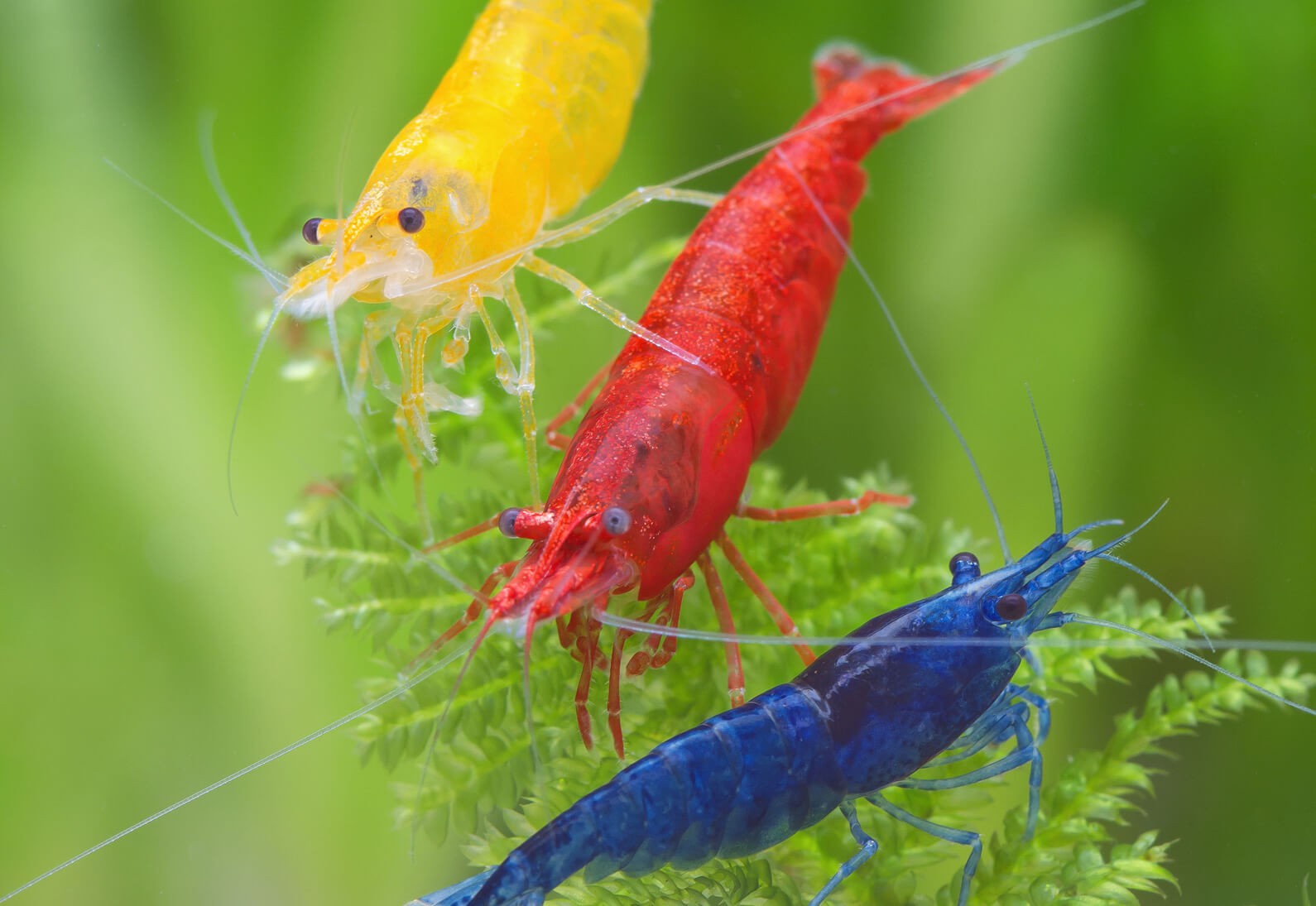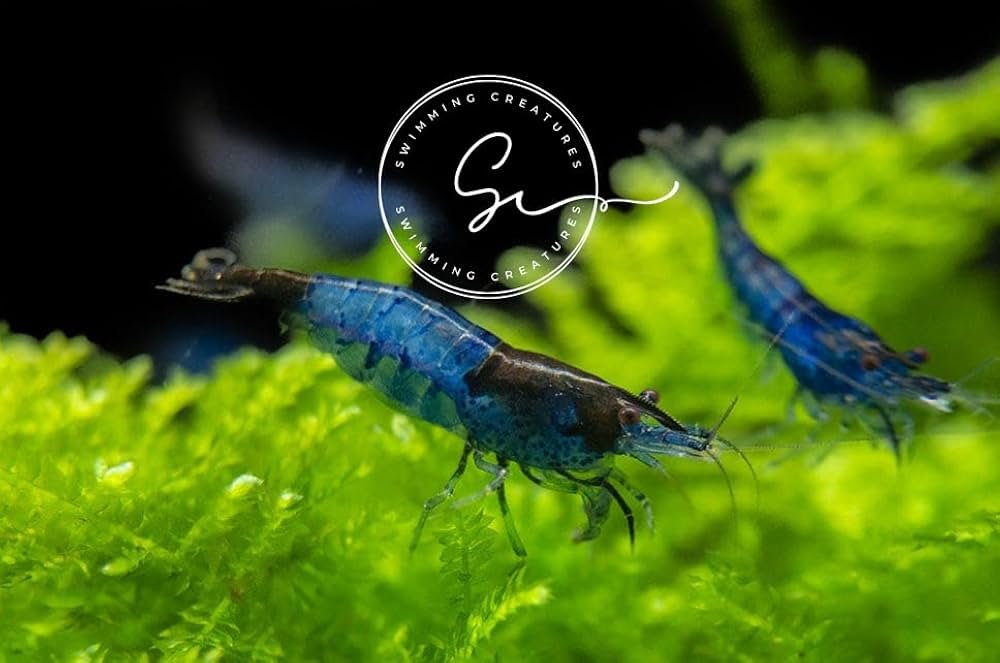Blue Dream Rili Shrimp can face health issues like bacterial infections and poor water quality. Regular maintenance and monitoring are crucial.
Blue Dream Rili Shrimp are popular among aquarists for their striking blue coloration and active behavior. These freshwater shrimp thrive in well-maintained tanks with stable water parameters. Health problems can arise from bacterial infections, often due to poor water quality or stress.
Maintaining clean water, a balanced diet, and proper tank conditions helps prevent these issues. Regular water changes and monitoring ammonia, nitrite, and nitrate levels are essential. Observing shrimp behavior and appearance can also indicate potential health problems early. Healthy Blue Dream Rili Shrimp contribute to a vibrant, lively aquarium environment, making them a favorite among hobbyists.
Common Health Problems
Blue Dream Rili Shrimp are a beautiful addition to any aquarium. But they can face various health issues. Knowing these problems can help keep your shrimp healthy and happy.
Parasite Infections
Parasites can cause serious health issues for Blue Dream Rili Shrimp. They often appear as tiny white spots on the shrimp’s body. These parasites can weaken your shrimp and make them sick.
Common signs of parasites include:
- White spots on the body
- Scratching against surfaces
- Reduced activity
- Loss of appetite
To treat parasite infections, you can use aquarium salt or special medications. Make sure to follow the instructions on the product label carefully.
Bacterial Diseases
Bacterial diseases can also affect Blue Dream Rili Shrimp. These diseases can cause various symptoms, including:
- Red or inflamed spots
- Swollen body parts
- Unusual swimming patterns
- Decreased appetite
Maintaining clean water is crucial to prevent bacterial diseases. You can also use antibacterial treatments to fight infections. Be sure to quarantine new shrimp before adding them to your tank. This helps prevent the spread of diseases.
| Health Problem | Common Symptoms | Treatment |
|---|---|---|
| Parasite Infections | White spots, scratching, reduced activity, loss of appetite | Aquarium salt, special medications |
| Bacterial Diseases | Red spots, swelling, unusual swimming, decreased appetite | Clean water, antibacterial treatments, quarantine |
Understanding these common health problems can help you maintain a healthy tank. It ensures your Blue Dream Rili Shrimp thrive and remain vibrant.
Symptoms To Watch For
Blue Dream Rili Shrimp are known for their vibrant colors and active behavior. But like all aquatic pets, they can develop health problems. Recognizing the symptoms early can save your shrimp’s life. Below are some key symptoms to watch for, divided into behavioral changes and physical indicators.
Behavioral Changes
Behavioral changes can be early signs of health issues in Blue Dream Rili Shrimp. Here are some common behaviors to monitor:
- Lethargy: Shrimp lying still for long periods.
- Erratic Swimming: Unusual, rapid movements or swimming in circles.
- Hiding: Excessive hiding or staying in one spot.
- Loss of Appetite: Shrimp not eating as usual.
- Climbing Out: Attempting to escape the tank.
Physical Indicators
Physical changes often indicate more serious health issues. Here are some key indicators to observe:
| Symptom | Description |
|---|---|
| Color Fading | Loss of vibrant color, becoming pale or translucent. |
| White Spots | Presence of white spots on the body, indicating possible infection. |
| Broken Antennae | Damaged or missing antennae, possibly from fights or poor water quality. |
| Swollen Abdomen | Abdomen appears bloated, which could indicate internal issues. |
| Molting Issues | Difficulty shedding exoskeleton, often due to poor water conditions. |
Proper Tank Conditions
Maintaining proper tank conditions is vital for the health of Blue Dream Rili Shrimp. These small creatures need specific water parameters and a clean environment to thrive. Let’s explore the optimal water parameters and tank cleaning routines.
Optimal Water Parameters
Blue Dream Rili Shrimp are sensitive to water conditions. Keeping the water clean and stable is essential.
| Parameter | Ideal Range |
|---|---|
| Temperature | 72-78°F (22-26°C) |
| pH | 6.5-7.5 |
| Ammonia | 0 ppm |
| Nitrite | 0 ppm |
| Nitrate | < 20 ppm |
Keep the temperature stable between 72-78°F (22-26°C). Ensure the pH level is between 6.5-7.5. Monitor ammonia and nitrite levels closely; both should be at 0 ppm. Nitrate levels should be less than 20 ppm.
Tank Cleaning Routine
A consistent cleaning routine helps maintain a healthy environment.
- Change 10-20% of the water weekly.
- Clean the substrate with a siphon to remove debris.
- Wipe down tank walls to prevent algae growth.
- Check and clean the filter regularly.
Perform a weekly water change of 10-20%. Use a siphon to clean the substrate and remove debris. Wipe down the tank walls to avoid algae buildup. Regularly check and clean the filter to ensure proper water flow.

Credit: www.garnelio.de
Diet And Nutrition
Understanding the diet and nutrition of Blue Dream Rili Shrimp is essential for their health. Proper feeding ensures they remain vibrant and active. Let’s explore their dietary needs.
Balanced Diet
Blue Dream Rili Shrimp thrive on a balanced diet. They need a mix of proteins and vegetables. Feed them blanched spinach, zucchini, and peas. These vegetables are rich in nutrients.
Include protein-rich foods like shrimp pellets and fish flakes. These foods help them grow strong. Avoid overfeeding to prevent water quality issues.
Avoid processed foods with artificial additives. Such foods can harm their health. Instead, stick to natural sources.
Supplements
Supplements can enhance their diet. Calcium supplements are vital for their shell growth. A lack of calcium can lead to molting problems.
Provide mineral rocks in their tank. These rocks release essential minerals slowly. This helps maintain their overall health.
Use high-quality shrimp-specific supplements. These are formulated to meet their unique needs.
| Food Type | Examples | Benefits |
|---|---|---|
| Vegetables | Spinach, Zucchini, Peas | Rich in essential nutrients |
| Proteins | Shrimp Pellets, Fish Flakes | Support growth and development |
| Supplements | Calcium, Mineral Rocks | Enhance shell strength and health |
By providing a varied diet, you ensure your shrimp stay healthy. Watch their feeding habits and adjust as needed. This keeps their environment clean and balanced.
Preventative Measures
Blue Dream Rili Shrimp are delicate creatures. They need specific care to stay healthy. There are several ways to prevent health problems. This section will cover key preventive measures. These include quarantine for new shrimp and regular health checks.
Quarantine New Shrimp
Quarantine is essential for new shrimp. It helps prevent diseases from spreading. Set up a separate tank for new arrivals. Keep them there for at least 2 weeks. This helps you monitor their health closely.
During quarantine, observe for any signs of illness. Look for unusual behavior, discoloration, or lethargy. Treat any issues promptly to avoid contamination. Always use clean and separate equipment for the quarantine tank.
Regular Health Checks
Regular health checks are crucial. They help you catch problems early. Make it a routine to inspect your shrimp weekly. Use a magnifying glass to look for any signs of disease. Check for physical changes like shell discoloration or lesions.
Also, monitor their behavior. Healthy shrimp are active and swim around. If you notice any changes, take action immediately. Keeping a health log can be helpful. Record any abnormalities and treatments used.
These preventative measures can ensure your Blue Dream Rili Shrimp stay healthy. Quarantine new shrimp and perform regular health checks. This way, you can enjoy a vibrant and thriving shrimp tank.
Treatment Options
Blue Dream Rili Shrimp are delicate creatures. They are prone to various health issues. Effective treatments are essential to ensure their well-being. Below are some treatment options for common health problems.
Medications
Medications can treat infections and diseases. Always use shrimp-safe medications.
- Anti-bacterial Medications: Treats bacterial infections. Follow dosage instructions carefully.
- Anti-fungal Medications: Use for fungal infections. Effective when used early.
- Anti-parasitic Medications: Eliminates parasites. Safe for shrimp tanks.
Always quarantine new shrimp. Prevents the spread of diseases. Maintain water quality during treatment. Poor water can worsen health issues.
Natural Remedies
Natural remedies are safe and effective. They cause less stress to shrimp.
- Indian Almond Leaves: They have anti-bacterial properties. Use them in the tank.
- Garlic: Acts as a natural anti-parasitic. Crush and add to the tank.
- Salt Baths: Use non-iodized salt. Effective for treating external parasites.
Natural remedies support shrimp health. They boost the immune system. Always monitor shrimp during treatment. Look for signs of improvement.
Stress Reduction
Stress is a major factor that affects the health of Blue Dream Rili Shrimp. Reducing stress can help them stay healthy and vibrant. This section covers ways to minimize stress in their environment.
Ideal Tank Mates
Choosing the right tank mates is crucial for reducing stress. Blue Dream Rili Shrimp need peaceful companions. Consider these ideal tank mates:
- Snails
- Small, non-aggressive fish
- Other shrimp species
Avoid aggressive or large fish. They can scare or harm the shrimp. Keeping the tank peaceful ensures the shrimp feel safe and secure.
Minimizing Disturbances
Minimizing disturbances in the tank is essential. Here are some tips to keep the environment calm:
| Action | Benefit |
|---|---|
| Maintain stable water conditions | Prevents stress from sudden changes |
| Limit loud noises around the tank | Reduces stress from external sounds |
| Avoid frequent tank rearrangements | Maintains a familiar environment |
Following these tips can help create a stress-free environment for Blue Dream Rili Shrimp. This will help them thrive and stay healthy.

Credit: www.amazon.com
When To Consult A Vet
Blue Dream Rili Shrimp are delicate creatures. Recognizing health issues early is crucial. Sometimes, home treatments aren’t enough. Knowing when to consult a vet can save your shrimp.
Severe Symptoms
Watch for severe symptoms in your Blue Dream Rili Shrimp. These symptoms can indicate serious health problems. Common severe symptoms include:
- Loss of color
- Unusual swimming behavior
- Visible parasites
- Constant hiding
If you notice any of these symptoms, consult a vet immediately. Early intervention can prevent further health decline.
Unresponsive To Treatment
Sometimes, home treatments are not effective. If your shrimp’s condition doesn’t improve, seek professional help. Signs that treatments are not working include:
- Persistent symptoms after treatment
- Worsening condition
- No change in behavior or appearance
Consult a vet if your shrimp is unresponsive to treatment. A vet can provide specialized care and medication.

Credit: buceplant.com
Frequently Asked Questions
Are Blue Dream Shrimp Hard To Care For?
Blue Dream shrimp are easy to care for. They thrive in stable, clean water conditions. Regular maintenance and proper feeding ensure their health.
Why Are My Blue Shrimp Dying?
Blue shrimp may die due to poor water quality, incorrect pH levels, or inadequate temperature. Ensure proper tank conditions.
How Can You Tell If Shrimp Are Sick?
Sick shrimp show signs like lethargy, discoloration, unusual swimming, and loss of appetite. Check for damaged shells and cloudy eyes.
What Is The Lifespan Of A Rili Shrimp?
Rili shrimp typically live for 1 to 2 years. Proper water conditions and diet can help them reach their full lifespan.
Conclusion
Maintaining Blue Dream Rili Shrimp health requires vigilance and proper care. Regularly check water parameters and provide a balanced diet. Address health issues promptly to ensure longevity. Your shrimp will thrive with the right environment and attention. Healthy shrimp contribute to a vibrant aquarium ecosystem.
